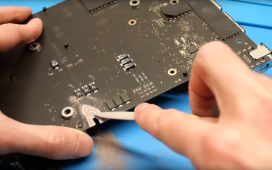The M4 is expected to be announced later today during Apple’s ‘Let Loose’ event, and with the company already employing the use of TSMC’s 3nm technology before, we immediately assumed that the new silicon would be fabricated on this lithography. However, one report states that unlike the M3 powering various Macs and mass produced on the ‘N3B’ architecture, Apple’s M4 will switch to the updated ‘N3E’ process, resulting in various improvements. The report also mentions that the upcoming SoC will arrive in three variants, which is nothing unusual regarding Apple Silicon releases.
Previous report highlighted evidence which suggests that the M4 could be an entirely new chipset compared to the M3
TSMC’s 3nm ‘N3E’ architecture enables better yields, higher computational performance, and improved power efficiency when directly compared to the ‘N3B’ node. With China Times reporting that the M4 will transition to the improved manufacturing process, Apple can effectively cut down its component costs by having more supply at hand. The same SoC is also said to be found in other upcoming machines, such as entry-level Macs, so with an excess chip supply in its possession, the technology giant can have adequate shipment available for customers.
The report also talks about other M4 variants, with the regular one sporting the codename ‘Donan,’ followed by the more powerful Brava that will likely fuel the updated MacBook Pro family and will probably be called the M4 Pro and M4 Max. Lastly, we have ‘Hidra,’ and based on our previous report, this codename belongs to Apple’s M4 Ultra and is expected to be found in the upcoming Mac Pro and Mac Studio. There are two pieces of evidence that we talked about before, hinting that the M4 will be a completely different chipset compared to the M3.
However, given the short period between each Apple Silicon launch, we firmly believe the M4 and M3 will share a few similarities. However, one strong differentiation is the newer SoC could bring enhanced AI-related functionality to the iPad Pro models. This means that a larger Neural Engine could be found on the SoC, as Apple’s A18 Pro has also been reported to receive this upgrade to support generative AI on iOS 18. While the CPU and GPU core counts have yet to be shared, the M4 may have the same configuration of four performance cores paired with four efficiency ones.
Sadly, only basic information surrounding the silicon is shared, so we will see what Apple announces during its event and update our readers in due time. Hopefully, there are some stark differences between the two chipsets.
News Source: China Times










